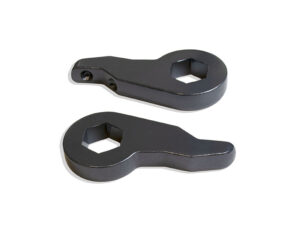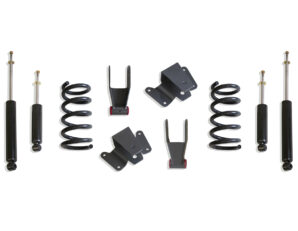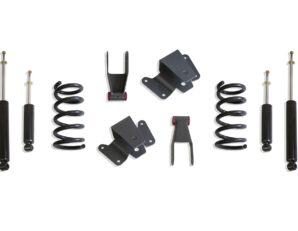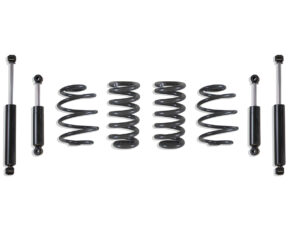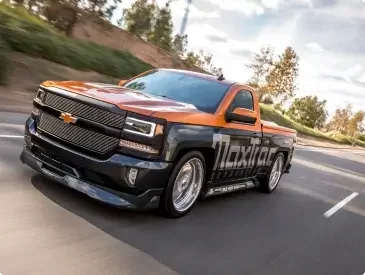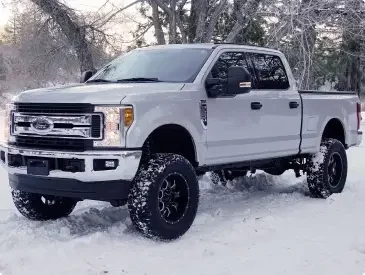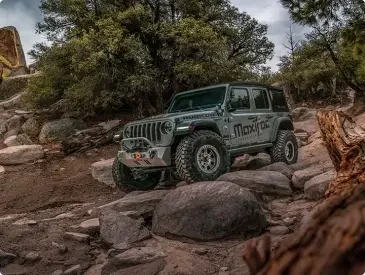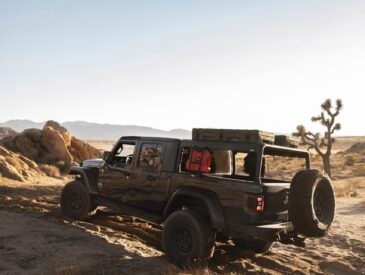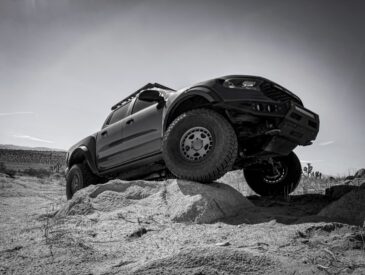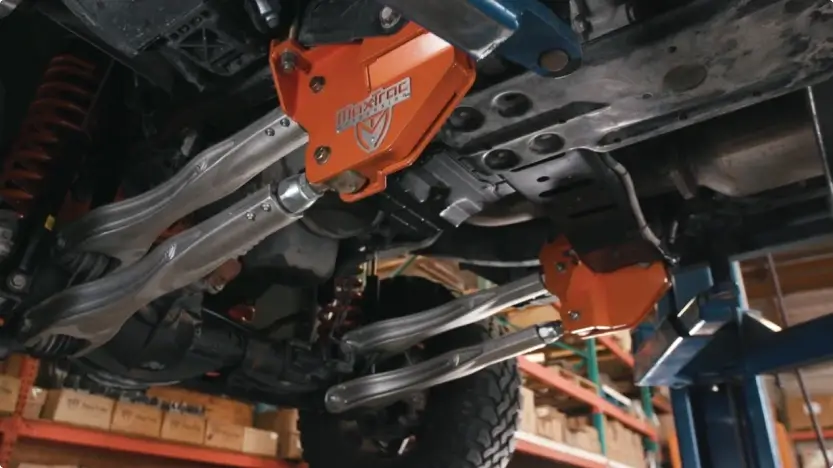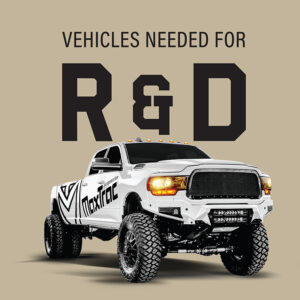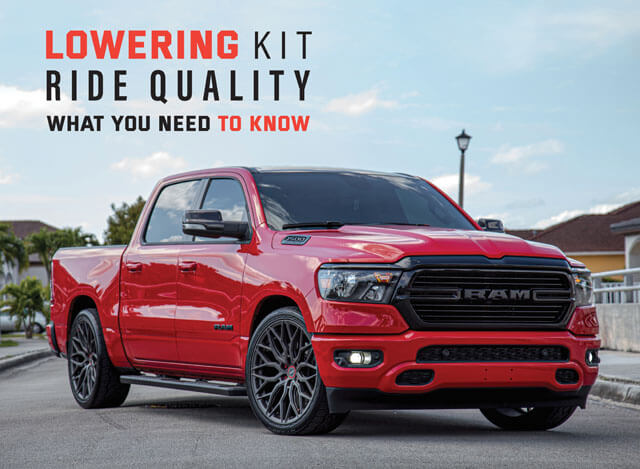
“On a lowered truck, the suspension’s range of motion gets reduced. This is due to the exchange of upward wheel travel, for a lower ride height”
RIDE QUALITY OF A LOWERED TRUCK:
Lowering a truck can be achieved using a variety of techniques and designs. This will depend on how much you are looking to lower your truck and what suspension your vehicle comes equipped with. The ride quality of a lowering kit can vary based on which techniques are used to achieve the drop. It can also be determined by how much drop is desired and by the expectations of the driver.
Let’s dive deeper.
So, you are looking to lower your truck, but are worried about how it’s going to ride? There are numerous factors that can contribute to the ride quality of a lowered truck. Some of which include: range of motion, shock valving, spring rate, tire profile, and road conditions. The most important thing to remember though, is that everyone’s opinion of ride quality can be different.
Every vehicle’s suspension has a specified range of motion that can vary by year, make & model. It can also vary by the type of suspension the vehicle comes equipped with from the factory. Which is why you will see more extreme lowering kits, like a 5”/7” drop kit for one platform, but only a 2”/4” drop kit for another. In most cases when lowering a truck, “suspension up-travel is traded for ride height”. For example, the front of an IFS based truck like a GM 1500, Ram 1500, or F-150, typically will have about 3” of up-travel and 3” of down travel. If you were to install a 3” drop spring or 3” lowering strut in the front, then you would have no suspension up-travel left. This would in turn cause the truck to ride extremely stiff. However, if you were to install a 2” drop spindle along with a 1” drop coil or strut, then the truck would drive more comfortable. A drop spindle itself does not compromise suspension up-travel. Therefore, with the combination of the two components, the suspension would still have about 66% of its upward range of motion.
-
1988-2006 GM 1500 4WD | 1992-1999 GM SUV 4WD | 2000-2006 GM SUV 2WD/4WD 1″-2″ LOWERING TORSION KEYS
Maxtrac 440513
$129.61 -
1988-2018 GM 1500 | 1992-1999 GM SUV | 1997-2003 F-150 | 1994-2001 RAM 1500 1″ LIFT SHACKLES OR 1998-2009 RANGER 1″ LOWERING SHACKLES
Maxtrac 710515
$111.71 -
1997-2003 F150 2WD 2″/4″ LOWERING KIT (V6)
Maxtrac K333524-6
$742.81 -
1997-2003 F150 2WD 2″/4″ LOWERING KIT (V8)
Maxtrac K333524-8
$742.81
The rear of a truck will typically have a much different suspension design from the front. As well as more range of motion. A big factor at play is whether your truck is equipped with a typical leaf spring suspension. Or if it’s equipped with a more modern, multi-link rear coil spring suspension. This will greatly determine how much drop can be achieved. Most trucks equipped with rear leaf spring suspension tend to have more upward range of motion between the axle and frame. Therefore, these applications have the capability for more drop. Trucks that come equipped with a multi-link rear coil spring suspension tend to have less range of motion. In these cases, there is less ability for increased amounts of drop. For example, a 4” rear drop on a 09+ Ram 1500 (which comes equipped with a multi-link rear suspension) has about the same suspension up-travel as a GM 1500 with a 6” drop. Or the similar equivalent to a F-150 with a 5” drop. Other factors that greatly contribute to this are frame location and bump stop placement which we will touch on in the next paragraph.
Although each truck has a specified range of motion for the suspension, in most cases, this range of motion can be increased to allow for more suspension up-travel. This will equate to a more comfortable ride quality. One technique commonly used to achieve this are with aftermarket lowering struts that have a shorter body. Which will allow for more suspension compression. In the rear of a truck, installing shorter bump stops or even a “C-notch” frame support will extend the truck’s upward travel past the OEM specified range. These techniques have been created by designers for many years based on demand from lowered truck enthusiasts. A truck with a 2”/4” drop can look great and ride nice, but many people prefer the more “slammed” look of a 3”/5” or 4”/6” drop (with the goal being to get the tire right at the fender line). Increasing suspension up-travel greatly helps in giving lowered trucks a more comfortable ride. One must keep in mind that it is still less range of motion than your truck had from the factory. This leads us into altering spring rates and shock valving.
Your suspension’s spring rate and shock valving play a huge factor in ride quality. Which is why choosing the right spring and/or shock can make all the difference in how your vehicle’s suspension performs. For any daily driven vehicle, staying close to the OEM set up is always a safe and comfortable bet. Vehicle manufacturers spend millions of dollars to develop their suspension systems. While vehicle owners have typically gotten used to the OEM ride quality. Most OE suspension spring rates and shock valving are designed for the factory range of motion. The factory range of motion is significantly greater than that of a lowered truck. Running factory spring rates and shock valving, with less range of motion, can result in the suspension bottoming out sooner. In turn, this can cause the ride quality to be less than desirable. It’s one of the major reasons why lowering springs and shocks will feature a firmer coil rate and heavier shock valving. These components can slow down the speed to which the suspension cycles up into the bump stops. Making for a firmer ride, but also greatly diminishing hard “bottom-outs”. Firmer spring rates and shock valving may also improve the handling and performance of a vehicle.
Another factor that can affect ride quality is the profile of your tires and the pressure to which they are filled. In today’s world, there are what seems like a million different tire options in all different looks, hardness, sizes and performance. All of these factors about a tire can play a role in the ride quality of your truck and how your truck performs. The two factors that play biggest role in ride quality are: Tire profile (which is how much side wall your tire has) and tire pressure. At its root definition, a tire is an airbag. It needs to be able to flex in order to absorb small bumps and imperfections in the road. Having a lower profile tire and higher air pressure in your tires will dramatically firm up the ride. The tire is no longer able to flex and absorb the imperfections as easily as it did with larger, more cushiony sidewalls.
The final factor in the ride quality of a lowered truck that needs to be addressed is road conditions. We all know that driving on a rough road can be a night and day difference from driving on a smooth road. This is why vehicles come equipped with suspension systems in the first place. A suspension’s range of motion allows the vehicle to overcome a certain degree of variation in road conditions. While still maintaining good ride quality. On a lowered truck, the suspension’s range of motion gets reduced. This is due to the exchange of upward wheel travel, for a lower ride height. If the road conditions in your area are rough and less than ideal, this should be taken into consideration when deciding how much to lower your truck.
Something to always keep in mind is that ride quality is a personal preference. Not everybody has the same definition of ride quality. Which is why there are many different options when it comes to trucks, lowering kits, and wheels & tires. A lot of these configurations will drive great according to some, and not so great according to others. The key takeaway is that you must be mindful of the trade-off that comes with lowering a vehicle. A compromised ride quality undoubtedly gets exchanged in return for the look you are trying to achieve. Understanding that your truck can have a “stock like” ride quality, but never ride exactly like stock is crucial. All of the various factors discussed in this article will give you realistic expectations and help you to enjoy your lowered truck even more.
